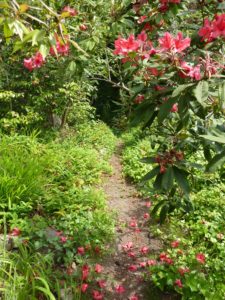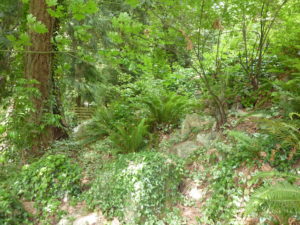I recently attended a thought-provoking presentation by Tim Gill, a researcher, father and author from England, titled “Unwrapping Bubble-Wrapped Kids: The Power of Play”.
Thinking Back to Your Childhood… What Were Your Favourite Places to Play? Did You Take Part in Risky Play?
I remember going off with the neighbourhood kids (without adult supervision) for hours at a time, collecting ladybugs, and adventuring. Tim then asked us how many of us thought of a place outdoors? The answer = the entire audience. For how many was this without parental supervision? The answer = everyone!
These outdoor adventure opportunities gave us a taste of freedom. They didn’t used to be called “risky play”. They were a trial run for becoming independent.
Childhood is a journey ~ the progressive handing over of risk-management
~ Tim Gill
Tim Gill shared this article from the Daily Mail: How Children Lost the Right to Roam in Four Generations which shows a map of four generations and how far each of the children could go.
2007 – age 8yrs. Ed – allowed to walk on his own to the end of his street (300 yards)
1979 – age 8yrs. Mother, Vicky – allowed to walk on her own to the swimming pool half a mile away
1950 – age 8yrs. Grandfather, Jack – allowed to walk on his own, one mile to the woods
1919 – age 8yrs. Great-Grandfather, George – allowed to walk six miles to go fishing
Fascinating isn’t it? What has changed?
According to the media, parents are increasingly anxious and paranoid, but are there statistics to back up their fears?
What is the Leading Cause of Death for Children in BC?
Sadly, the leading cause of death is car crashes, which as Tim pointed out, is the unfortunate irony. Parents think that driving from one supervised activity to another is safer than children getting themselves there.
He went on to discuss that we shouldn’t be concerned about preventing fractures that are temporary. Children learn from risky play. If they bike on a slippery road and fall and break an arm, this is a better lesson to learn at a young age, than to be driving their first car and hitting a patch of ice.
Risk Assessment vs. Risk-Benefit Assessment
He explained that when we just focus on the risks and become over-protective, we parent from a deficit model. Instead, we need to look at evidence and the benefits of outdoor play.
Playground safety rules have also become increasingly stringent. I really loved the quote he shared with us from Helle Nebelong:
I am convinced that standardized playgrounds are dangerous, just in another way. When the distance between all the rungs in a climbing net or a ladder is exactly the same, the child has no need to concentrate on where he puts his feet. This lesson cannot be carried over to all knobbly and asymmetrical forms, with which one is confronted throughout life.
We all remember, as kids, our favourite parts on playgrounds were the wobbly bridges, and I loved to go on hikes where we had to pull ourselves up using tree roots and rocks.
Tim Gill, has been a major influencer in England’s current philosophy around playground design. He’s putting the “adventure” back into adventure playgrounds, as they were called when I was growing up. He’s bringing back the dirt ground, the asymmetrical pieces, the wobbly bridges and the fun of climbing challenges. He’s also seeing that the return of the old style of playground is also bringing back the children to play, even risky play!
If we don’t get expose our children to adventure, opportunities to weigh up the risks, and hiking and playing on wobbly surfaces, they won’t feel comfortable as adults to take calculated risks or walk on anything but flat cement.
If you have a chance to get out hiking this weekend, here’s a list for Vancouver readers, sorted by region, distance, difficulty etc. If hiking isn’t a possibility, Tim also suggests bringing out the blankets, old sheets and big empty cardboard boxes to encourage fort building in your backyard!
Happy Outdoor Weekend!
Warmly,
Want to Connect?
Subscribe now to receive free weekly parenting tips and inspiration.










